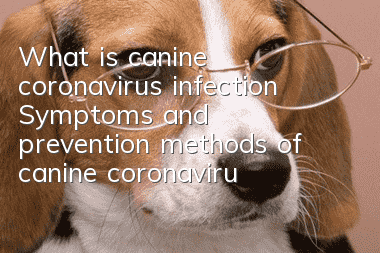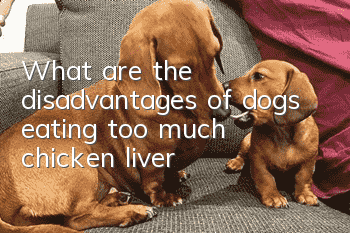What is canine coronavirus infection? Symptoms and prevention methods of canine coronavirus infection

Canine coronavirus infection is an acute gastrointestinal infectious disease whose clinical characteristics are diarrhea and vomiting. This disease can occur alone, and is often mixed with canine parvovirus, which aggravates the course of the disease.
【Pathogens and Epidemiology】
1. Pathogen: Canine coronavirus (CCV), which is a member of the genus Coronavirus. The virus mainly exists in the gastrointestinal tract of sick dogs and is excreted in the feces. The main route of transmission is through contaminated feed and drinking water, mainly through digestive tract infection.
2. Source of infection: Sick dogs and virus-carrying dogs are the main sources of infection. The virus has strong resistance in the external environment. The virus in feces can survive for 6 to 9 days, and pollutants can remain infectious in water for several days. Once the disease occurs, it is difficult to control its spread within a certain period of time.
3. Susceptible animals: Canines are susceptible, and some can infect pigs and cats. Dogs of all ages, breeds and genders are sensitive to CCV, with the highest incidence rate occurring between 2 and 4 months old.
4. Epidemic characteristics: The incidence of CCV infection is very low, about 30%. Distributed worldwide. It mostly occurs in the cold winter and spreads rapidly, often affecting the entire litter of dogs within a few days.
【Symptoms】
The symptoms of puppies after infection are severe, and the main symptoms are gastroenteritis.
Vomiting occurs at the beginning of the disease and lasts for several days. It is not until diarrhea occurs that the vomiting symptoms are relieved or stopped. Diarrhea stools are mushy, semi-mushy or even watery, orange or green, and watery stools often contain mucus and blood.
She is depressed, likes to lie down, and has anorexia, but her body temperature is not high. Sick dogs quickly develop symptoms of dehydration and weight loss, especially puppies that are not treated in time and often die within 1 to 2 days. Symptoms in adult dogs are mild.
【Diagnosis】
The clinical symptoms and epidemiology of this disease are similar to canine parvovirus and rotavirus infections, and the infections are often mixed and difficult to distinguish. The feces of sick dogs should be collected for electron microscopy, virus isolation or fluorescent antibody testing to facilitate the diagnosis of the disease.
【Prognosis】
Puppies have a high mortality rate, while adult dogs have a lower mortality rate.
【Prevention】
Specific treatment uses serum, domestic five-linked and six-linked serum. Supportive care is provided to maintain electrolyte and acid-base imbalances, and broad-spectrum antibiotics are used to prevent secondary infections. The emphasis is on prevention.
- A comprehensive list of commonly used medications for dogs
- Must-see precautions for dog neutering surgery
- What are the precautions for training a pug?
- How to supplement nutrition for dogs
- What’s wrong with dogs having vomiting and diarrhea?
- Causes of kidney failure in dogs
- How long does it take for dogs to recover from pneumonia?
- What happens when a dog breaks into a nest?
- acute gastroenteritis in dogs
- A healthy dog suddenly vomited yellow water and died.



